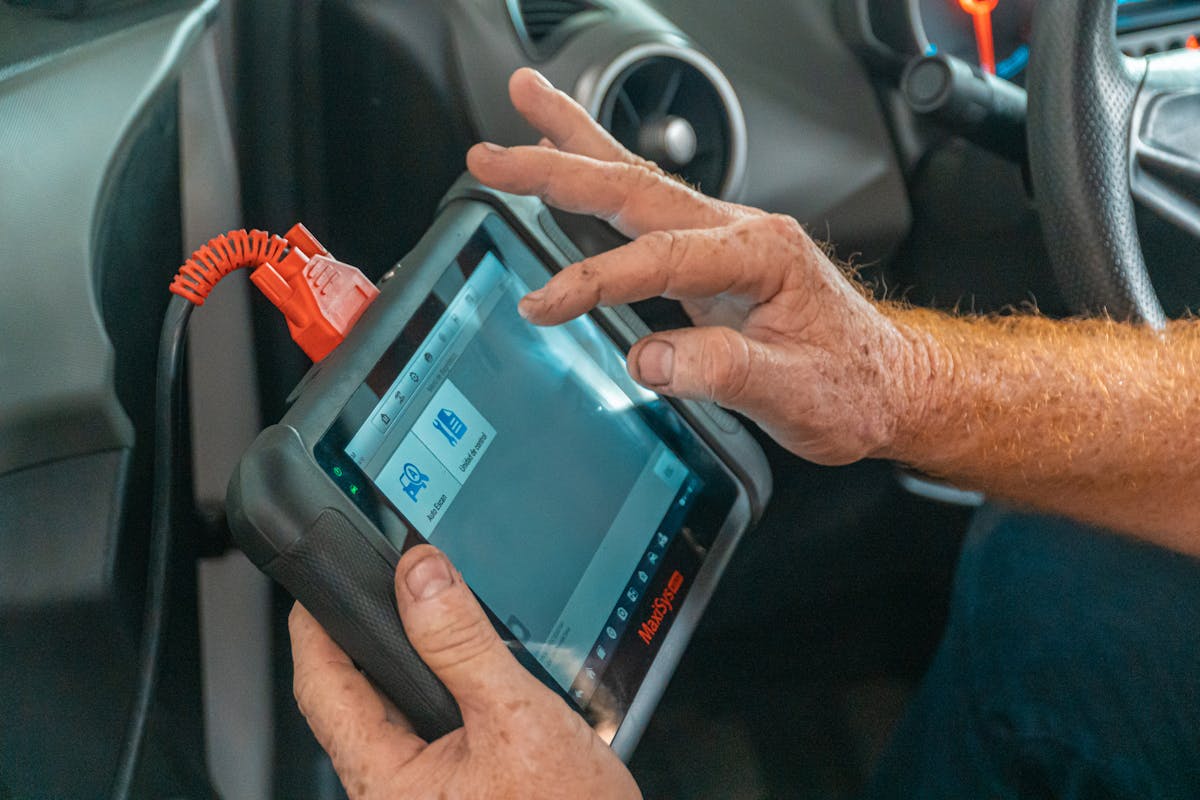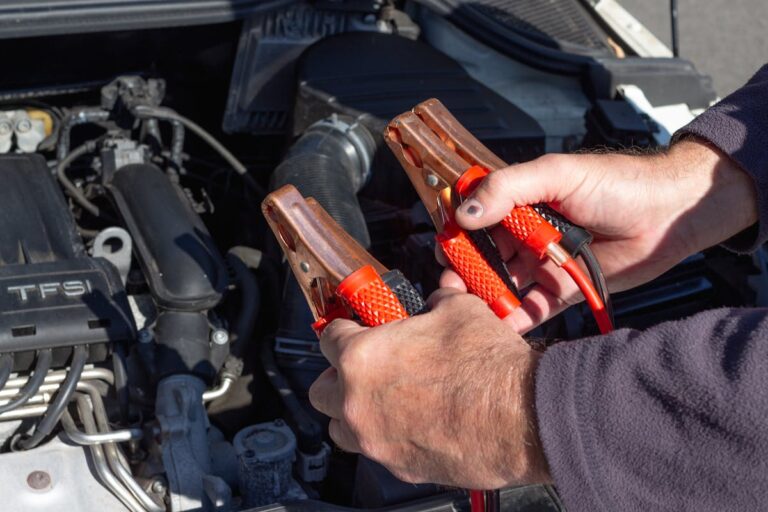The experience of a dead car battery is universally frustrating, often presenting itself at the most inconvenient times. Consequently, understanding the ways to prevent this common vehicle issue is invaluable. It involves regular inspection, maintaining ideal voltage, managing your driving habits, and more. However, it’s not just about knowing these steps, but comprehending the science and reasoning behind them. Let’s begin this journey of knowledge together, and perhaps, save ourselves from future instances of unexpected car battery failure.
Understanding Car Battery Lifespan
In the domain of automotive maintenance, understanding the lifespan of a car battery is essential. The battery’s life expectancy is contingent upon various factors including battery chemistry, environmental conditions, and usage patterns.
Battery chemistry, an integral part of a battery’s overall efficiency, plays a vital role in its lifespan. The two main types of car batteries are lead-acid and lithium-ion, each with distinct longevity traits. Lead-acid batteries, the most common type, typically last between 3 to 5 years. Lithium-ion batteries, on the other hand, tend to have a longer lifespan, often exceeding 5 years.
Temperature effects are another significant factor that influences battery lifespan. Low temperatures can slow down the chemical reactions inside the battery, reducing its capacity and eventually leading to battery failure. Conversely, high temperatures can accelerate these reactions, leading to increased wear and tear and a shortened lifespan.
Understanding these factors is important for maximizing battery life and minimizing the risk of unexpected breakdowns. By being cognizant of the battery chemistry and the effects of temperature, car owners can take proactive steps to extend the life of their vehicle’s battery.
Regular Battery Inspection Routine
Regularly conducting a thorough battery inspection is an indispensable part of vehicle maintenance. This task is not merely a precautionary measure; it is your first defense against unexpected breakdowns. By incorporating a set of simple battery checkup tips into your routine, you can greatly extend the life of your car battery and enhance your vehicle’s overall performance.
An effective battery inspection involves checking for signs of corrosion on the terminals, confirming the battery is securely fastened in its holder, and verifying the electrolyte level is within the recommended range. Using a multimeter to check the battery’s voltage is also an essential step. A healthy battery should read around 12.6 volts when the engine is off.
The routine inspection benefits are manifold. Regular checks not only prevent sudden battery failure but also identify potential issues before they escalate into major problems. Moreover, it promotes better fuel efficiency, as a well-maintained battery guarantees ideal electrical system performance.
Importance of Professional Servicing
Despite the value of regular self-inspections, entrusting your vehicle to qualified professionals for periodic servicing cannot be overstated. The complexity of modern vehicle systems often necessitates professional expertise, which is especially true for battery maintenance.
Professional servicing guarantees a thorough approach to battery care. Expert technicians can spot early signs of battery wear that an untrained eye might miss, mitigating the risk of sudden failure. Moreover, professionals are equipped to conduct specialized tests like load testing, which assesses a battery’s ability to perform under maximum output.
Routine check-ups also guarantee the proper functioning of related components. For instance, the charging system’s performance directly affects battery life. A malfunctioning alternator or a faulty voltage regulator can overcharge or undercharge the battery, leading to premature failure. Professional expertise is indispensable in identifying and correcting such nuances.
Additionally, professional servicing often includes battery cleaning, which prevents corrosive build-up on terminals, a common cause for battery failure. This meticulous attention to detail contributes greatly to extending battery life.

The Role of Driving Habits
A notable, yet often overlooked, factor in the longevity of your car battery is your driving habits. The frequency and manner in which you operate your vehicle can greatly impact the battery’s lifespan.
Driving frequency is a critical consideration. Regular use of a vehicle keeps the battery properly charged. Conversely, a car left unused for extended periods is prone to battery degradation as the battery discharges naturally over time. To maintain a healthy charge level, aim to drive your car regularly, even if only for short distances.
Idle time also plays a pivotal role. Leaving your car idle for extended periods, especially with the electrical systems such as radio and air conditioning running, can deplete your battery considerably. This is because the alternator, which charges the battery while the car is in motion, isn’t active during idle phases.
Keeping Battery Terminals Clean
While considering the impact of driving habits on battery life, it’s also important to note the role of proper maintenance, specifically the cleanliness of battery terminals. Regular battery cleaning is imperative to prevent terminal corrosion, a common cause of battery failure. Corrosion occurs due to a chemical reaction between the battery terminals and the surrounding air, producing a white, powdery substance that hampers the effective transfer of electrical current.
To maintain the ideal performance of your battery, follow these steps:
- Disconnect the Battery: Before starting the cleaning process, disconnect the battery beginning with the negative terminal to guarantee safety.
- Clean the Terminals: Use a mixture of baking soda and water to clean the terminals. Apply this mixture using a toothbrush and scrub the terminals to remove corrosion.
- Rinse and Dry: Rinse off the mixture with clean water and dry the battery using a clean cloth or a blower.
Terminal corrosion can greatly degrade the performance of your battery, but regular battery cleaning can reduce this risk. Proper maintenance of battery terminals not only enhances the battery’s lifespan but also guarantees a reliable and efficient vehicle operation.
Using a Battery Maintainer
In the process of preserving the longevity of a car battery, a critical tool to reflect on is the battery maintainer. This discussion will explore the key aspects of understanding battery maintainers, the protocols for their correct usage, and the intrinsic benefits they provide. It is through a firm grasp of these elements that one can effectively prevent a battery’s untimely demise and guarantee its ideal performance.
Understanding Battery Maintainers
Battery maintainers, your vehicle’s unsung heroes, are vital tools for ensuring your car battery’s longevity. These devices not only keep your battery fully charged but also extend its life by preventing damaging effects of overcharging.
Understanding how battery maintainers work requires basic knowledge about different battery types and their charging cycles. The following three points elucidate this:
- Battery Types: There are primarily two battery types in vehicles: lead-acid and lithium-ion. Each comes with its unique charging requirements, and using the wrong maintainer can damage your battery. Thus, it’s important to use a maintainer designed for your specific battery type.
- Charging Cycles: A battery goes through several charging cycles, each requiring a different voltage. Battery maintainers are engineered to understand these cycles and adjust the voltage accordingly.
- Maintainer Function: Unlike traditional chargers, maintainers provide a constant trickle of power to keep a battery at ideal charge, rather than charging it from a depleted state. This prevents the battery from self-discharging when the vehicle is not in use.
In essence, understanding your battery type, its charging cycles, and how a maintainer functions can greatly help avoid a dead car battery.
Using Maintainers Correctly
Efficiency is paramount when it comes to using a battery maintainer. To guarantee peak performance, it is essential to take into account the battery type. Each type of battery, be it lead-acid, AGM, or lithium, has specific needs when it comes to charging and maintenance. The battery type should always be matched with the appropriate maintainer to avoid potential damage and maximize longevity.
Understanding the nuances of battery technology is an integral part of using maintainers correctly. For instance, certain types of batteries require a certain level of voltage to maintain their functionality without overcharging. A battery maintainer applies a consistent charge to prevent self-discharge, especially during periods of inactivity.
To use a battery maintainer correctly, first connect the maintainer to the battery. Next, plug the maintainer into an electrical outlet and set the desired charging mode. The maintainer should be left connected until the vehicle is ready for use. Always refer to the manufacturer’s instructions for specifics related to your particular battery type and maintainer model. By following these steps correctly, you can effectively prevent a dead battery and extend its life considerably.
Benefits of Maintainers
With the proper use of a battery maintainer, several benefits can be reaped. This device is specifically designed to contribute to efficient battery maintenance, offering a variety of advantages that can extend the lifespan of your car’s battery and improve its overall performance.
- Extended Battery Life: By maintaining a consistent charge, battery maintainers help to prevent the sulfate build-up that can drastically shorten a battery’s life. This prolongs your battery’s health, reducing the need for frequent replacements and in turn, saving you money.
- Charging Efficiency: Battery maintainers are designed to optimize charging efficiency. They automatically adjust their output based on the battery’s current state, ensuring it receives exactly the right amount of power. This prevents overcharging and undercharging, which can both damage the battery and degrade its performance.
- Convenience: Battery maintainers are relatively easy to use and require minimal effort for upkeep. Once connected, they do their work, freeing you from constantly having to check and adjust the battery’s charge. This makes them an ideal tool for maintaining batteries in vehicles that aren’t used regularly.
With these benefits, it’s clear that a battery maintainer is an invaluable tool for anyone seeking efficient and effective battery maintenance.
Managing Electrical Load Wisely
Balancing the electrical load in your vehicle is an essential part of avoiding a dead car battery. A vehicle’s electrical system is a complex network of interconnected components, and load management is vital for maintaining its electrical efficiency.
Load management refers to the distribution of power among the various electrical components of your vehicle. It’s about ensuring that no single component is overburdened while others are underutilized. This balance is critical for the ideal functioning and longevity of your vehicle’s electrical system, including the battery.
Electrical efficiency, on the other hand, refers to the ideal use of electrical energy. Your vehicle’s electrical system should be able to transform as much energy as possible from the battery into useful power for the car’s operations. Electrical inefficiencies, such as power leakage or overloading, can greatly drain your car battery.
Smart load management and maintaining electrical efficiency require a thorough understanding of your vehicle’s electrical system. Regular servicing can help identify potential issues early. Consider adopting energy-efficient practices, such as minimizing the use of electrical devices when the engine is off. Remember, managing your electrical load wisely can be a lifesaver for your car battery.
Frequently Asked Questions
What Are the Signs of a Dying Car Battery?
Signs of a dying car battery include difficulty starting the engine, dimming headlights, and a lit battery warning light. Reduced battery lifespan often manifests in these symptoms, indicating potential battery failure.
Can Extreme Weather Conditions Affect My Car Batterys Performance?
Yes, extreme weather can greatly impact your car battery’s performance. Cold weather may reduce the battery’s capacity while high heat can accelerate the battery’s self-discharge rate, both potentially leading to a dead battery.
Is It Safe to Jump-Start a Dead Car Battery?
Jump-starting a dead car battery is generally safe when proper precautions are taken. However, it’s essential to follow correct procedures for battery maintenance and jump-starting to avoid potential risks such as electrical shock or battery explosion.
Can I Replace My Car Battery on My Own?
Yes, you can replace your car battery independently. By following proper battery maintenance and installation tips, this task can be accomplished safely. However, it’s always recommended to consult a professional if you’re unsure.
How Can I Recycle My Old Car Battery?
Yes, old car batteries can be recycled. Many auto parts stores and waste management facilities offer battery recycling services. This eco-friendly disposal method guarantees harmful components are properly handled, reducing environmental impact. Always recycle responsibly.





